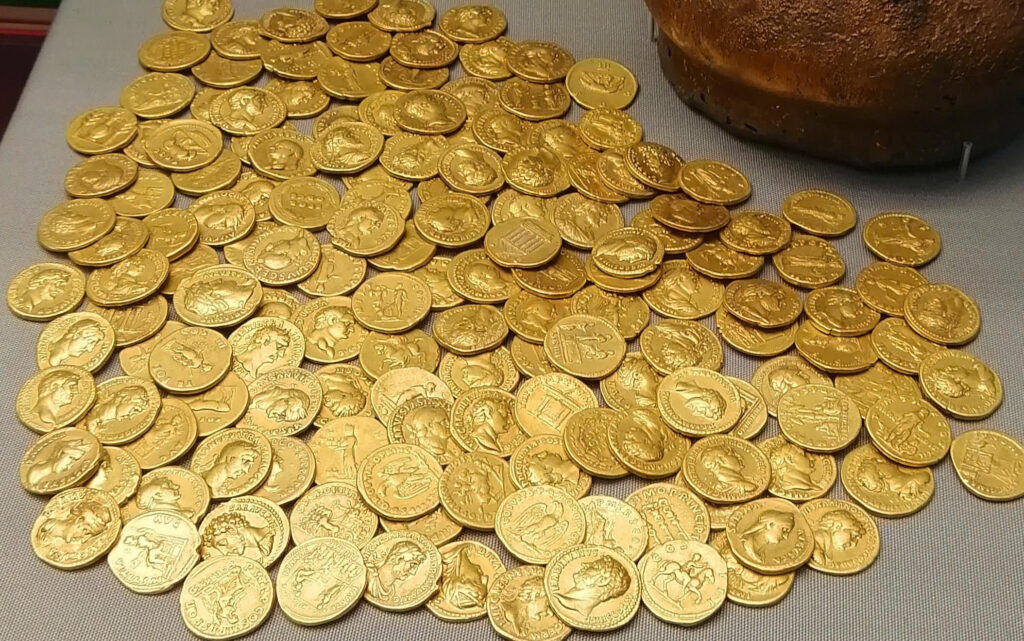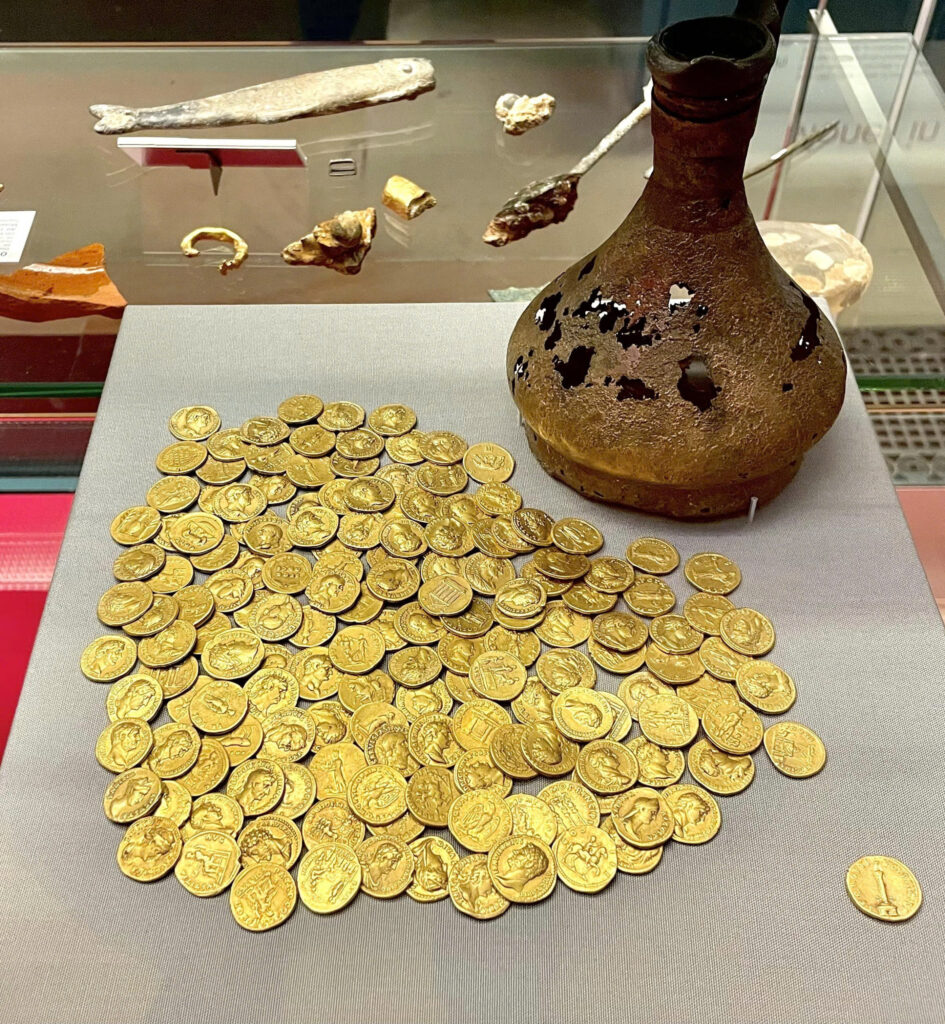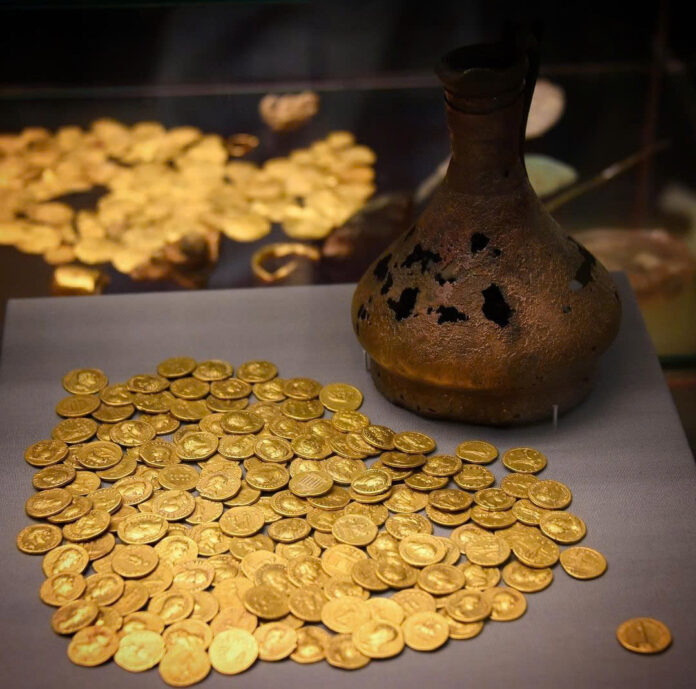The Extraordinary Discovery

In the historic town of Corbridge, Northumberland, UK, 1911 marked a pivotal moment in archaeological history. Beneath the floor of an ancient Roman house, workers unearthed what would become one of Britain’s most significant Roman discoveries – the Corbridge Hoard. At first glance, it appeared to be nothing more than a simple bronze jug. However, this unassuming vessel held an extraordinary secret: 160 gold aureus coins dating back to around 160 CE.
The Art of Deception

What makes this discovery particularly fascinating was the ingenious method of concealment. The bronze jug’s neck was carefully sealed with two bronze coins, creating a masterful deception that had preserved its contents for nearly two millennia. Only when excavators lifted the surprisingly heavy vessel did they realize the magnitude of their discovery.
Life in Roman Britain
A Strategic Location
The hoard’s location in Corbridge was no coincidence. Situated near Hadrian’s Wall, Corbridge served as a crucial military and trading center, bridging Roman Britain with the northern territories. The presence of such valuable treasure suggests its owner was likely a wealthy Roman official or merchant who understood the strategic importance of this frontier town.
A Fortune in Gold

The 160 aurei represented astronomical wealth in Roman times. To put it in perspective, a single aureus could support a Roman soldier for an extended period. This raises intriguing questions about the hoard’s owner – were they preparing for potential unrest? Did they intend to return for their fortune but never made it back?
The Vessel’s Tale
More Than Just a Container

The bronze jug itself tells a compelling story. Crafted from valuable bronze, it represents the sophistication of Roman craftsmanship. What began as an elegant household vessel transformed into a legendary treasure chest, preserving not just gold coins but also secrets of Roman Britain’s complex society.
Historical Significance
A Window to the Past
The Corbridge Hoard provides invaluable insights into Roman Britain’s economic and social fabric. Despite being on the empire’s frontier, Corbridge’s connection to Rome’s vast trade networks is evident through these gold coins. The very act of hiding such wealth suggests that even in relatively peaceful times, uncertainty lurked beneath the surface of Roman society.
Legacy

Today, the Corbridge Hoard stands as one of Britain’s most treasured Roman artifacts. More than just a collection of coins, it represents a tangible link to our past, telling a story of wealth, power, and the human instinct to protect what we value most. It reminds us that even in the farthest reaches of the Roman Empire, the threads of commerce, culture, and human nature wove a complex tapestry that continues to fascinate us today.

